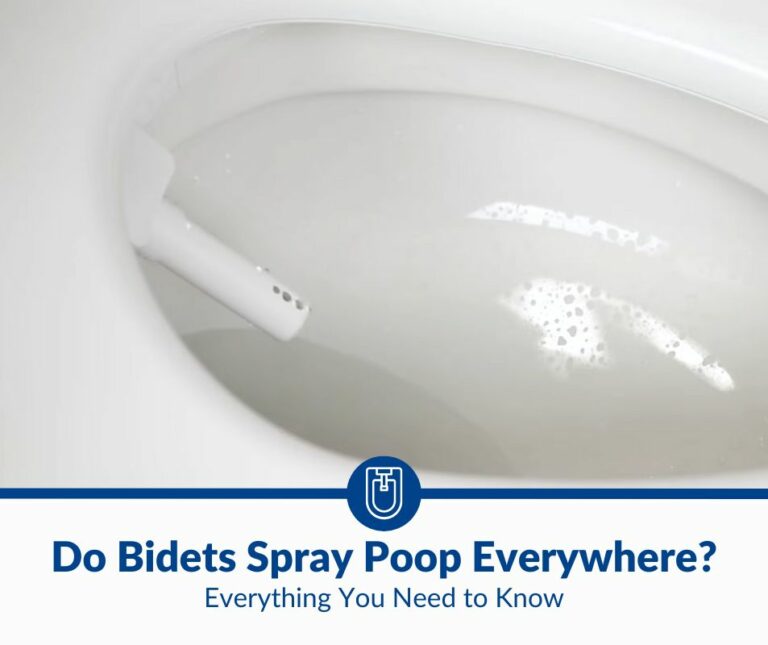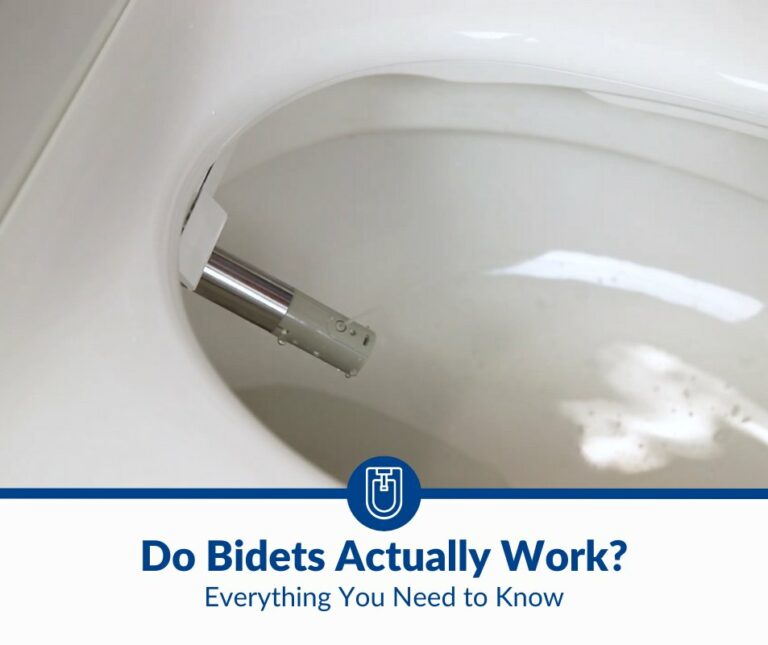Can You Flush Gum Down the Toilet?
Flushing gum down the toilet might seem like a convenient option. You may think it’s okay because it’s only a tiny piece of gum; however, you should think again because it can cause extreme damage to your plumbing.
You should never flush gum down the toilet. Putting gum and other sticky substances down the toilet can clog your pipes and cause irreversible damage to your septic tank. Gum is insoluble, which means it does not break down and could stay in your plumbing for a long time.
Are you still contemplating flushing gum down the toilet? In this article, I’ll discuss why you should throw your gum in the garbage, not your toilet, and what happens when you flush chewing gum.
What Happens When You Flush Chewing Gum?
Throwing gum down the toilet may seem like a normal thing to do. However, gum can sit in your pipes and cause problems with your plumbing system for several months or years. The sticky substance will slowly attract more insoluble objects and create a blockage that could cost you thousands to repair or replace.
Some of the major issues caused by flushing gum include the following:
- Creating blockages
- Preventing water flow
- Pipe corrosion
- Damaging septic tanks
Gum is made of hydrophobic polymers, which means it will not dissolve in water. Removing gum from your plumbing system is a difficult and potentially costly process.
Flushing the Toilet
Everything inside the toilet is expelled by the water in your cistern after you flush. The contents of your toilet travel through a system of sewage pipes to a sewage treatment facility. Your waste will travel to your septic tank if you are not connected to the sewage system.
Flushing gum down the toilet alongside waste could prevent it from reaching the treatment plant by obstructing the pipes.
Sewage Treatment
Anything other than human waste and toilet paper is removed from the sewage during the cleaning process. Objects such as toys, money, or stones are separated from the sewage to prevent blockages. Chemicals are added to the sewage to treat harmful bacteria before it is released into nearby waterways.
Why You Shouldn’t Flush Gum Down the Toilet
One piece of chewing gum is not enough to clog a toilet. However, it could cause more plumbing issues if it is left in the system. In most instances, chewing gum will pass through the pipes and onto a sewage treatment center without issues.
But there are many risks involved in flushing your gum down the toilet regularly.
Damages Septic Tanks
Chewing gum could cause irreversible damage to your septic tank system if left untreated. It is recommended that solids are pumped out of a septic tank every 3 to 5 years. Materials that do not decompose can affect the bacteria that help break down the waste inside your septic tank.
The greases, oils, and fats in gum can inhibit the biological process used in septic tanks.
Creates Blockages
Sticky gum could cause toilet drainage issues by clogging your pipes. One piece of gum is unlikely to clog your toilet. However, flushing lots of gum regularly could have negative long-term effects on your pipes.
Blocks the Flow of Water
Flushing gum could clog the pipes and prevent water from flowing freely. Your toilet will not work properly if the water cannot flush away the waste and toilet paper. Inadequate water pressure could cause other elements of the toilet to break and need repairs.
Why Won’t Gum Dissolve?
Gum is designed to be chewed until the flavor disappears and the person gets bored. Manufacturers have created a long-lasting formula that will not dissolve in water or saliva or digest in the human stomach. Although this seems great from a business perspective, it has become an environmental issue that is evident from the marks on sidewalks and public restrooms.
Latex Won’t Dissolve
Natural latex is similar to rubber and will not dissolve. Manufacturers rely on synthetic ingredients that stretch and give gum a desirable, chewy texture. The insoluble ingredients in gum and glycerol keep it fresher for longer.
Unfortunately, the major selling point of gum is also the main reason it is not biodegradable. Consumers use gum to prevent food cravings and increase their attention span. The rubber-like materials are similar to those used in tires and adhesives.
How Is Gum Made?
Prehistoric humans chewed gum and similar substances to freshen their breath and cleanse their teeth. The gum was made from tree sap or resin before modern developers created recipes flavored with mint. Gum manufacturers in the 1860s would use a substance called ‘chicle,’ which was tapped from the Manilkara chicle tree in Mexico.
The majority of modern gums are made from natural and synthetic materials that are cheaper and easier to source. The most common ingredients found in gum are:
- Gum base
- Sorbitol and other sweeteners
- Glycerol
- Artificial flavors
The base ingredient is melted before the flavors and sweeteners are added. The gum mixture is then formed into a shape and placed into packaging for customers to consume.
Can You Flush Biodegradable Gum?
Native Americans and Ancient Greeks invented biodegradable chewing gum centuries ago. Unfortunately, the demand for these ingredients was not sustainable as their popularity increased. Gum manufacturers then turned to synthetic materials to replace natural bark and tree sap.
Years later, biodegradable chewing gum is now available and made without artificial sweeteners or polymer-based ingredients. This gum might do less damage to sewage systems than synthetic gum products because they will dissolve in water. However, it could still contribute to blockages in your pipes.
Therefore, human waste and toilet paper are the only items you should flush down your toilet to be safe. Toilet-friendly cleaning products are also safe to flush to help keep your plumbing clean and operational.
How Gum Affects the Environment
Gum is becoming an environmental problem in households and public areas due to improper disposal. Every year, 105 tonnes of plastic waste is created by gum. Gum is made of 80% plastic, which could take over 1000 years to decompose. Other than causing damage to your plumbing, here are a few ways gum can affect the environment:
Expensive Removal Services
Local councils and authorities have to use expensive equipment to remove gum from the sidewalks and pathways; otherwise, it will remain there forever. Pressurized water is needed to remove the sticky substance from concrete paths and subways where passers-by drop their gum. Removing gum from public areas is time-consuming and hard work for those involved.
Watch the video below to find out more about gum removal:
Not only is gum an eyesore, but it also harbors harmful bacteria. Oral germs are trapped inside discarded gum and left in public areas with the possibility of transmitting deadly diseases.
Plastic Pollution
Improper gum disposal creates plastic pollution on land and at sea. Gum can poison and harm aquatic life and affect other marine organisms in various ways. At least 14 million tonnes of plastic are dumped in the ocean each year. Only 20% of plastic is recyclable, meaning the remaining 80% pollutes the planet.
Harming Wildlife
Many animals have died from swallowing discarded gum. Birds that consume gum will slowly die because it prevents them from ingesting food or water. Gum is not the most attractive food for birds, but it could become lodged in their airway or poison them if they choose to take a chance and swallow it.
Most gum also contains xylitol which will poison dogs if they eat it. Xylitol could cause profound hypoglycemia and severe liver damage if left untreated. Take your dog to an emergency vet if you suspect they have eaten a piece of gum.
How Should You Dispose of Gum?
You should always throw your gum in the garbage to prevent environmental issues and toilet blockages. Gum can absorb bacteria and illness, so it is important to wrap it in tissue or paper before you throw it away. Wrapping the gum in paper will also prevent it from sticking to your garbage can or waste disposal unit.
Some revolutionary companies are trialing gum recycling systems to help turn gum into something useful. Gumdrop has created a recycling scheme that turns gum into rubber boots for children in Romania. Users can drop their chewing gum inside a large recycling bin on the street (the bin is also made from recycled gum).
You should never throw chewing gum into the compost bin or food waste disposal. The gum could contaminate your biodegradable waste and prevent it from decomposing fully. Always throw your gum into a suitable garbage bin or public trash area to reduce plastic pollution.
Key Takeaway
Your toilet won’t thank you for flushing gum. Flushing gum may not cause problems at first, but if you do it regularly, you should attempt to clear it from your pipes as soon as possible. It can damage your septic system and create blockages.
Severe blockages caused by gum may require a plumber. Contact a professional if you suspect you have chewing gum stuck in your pipes.







